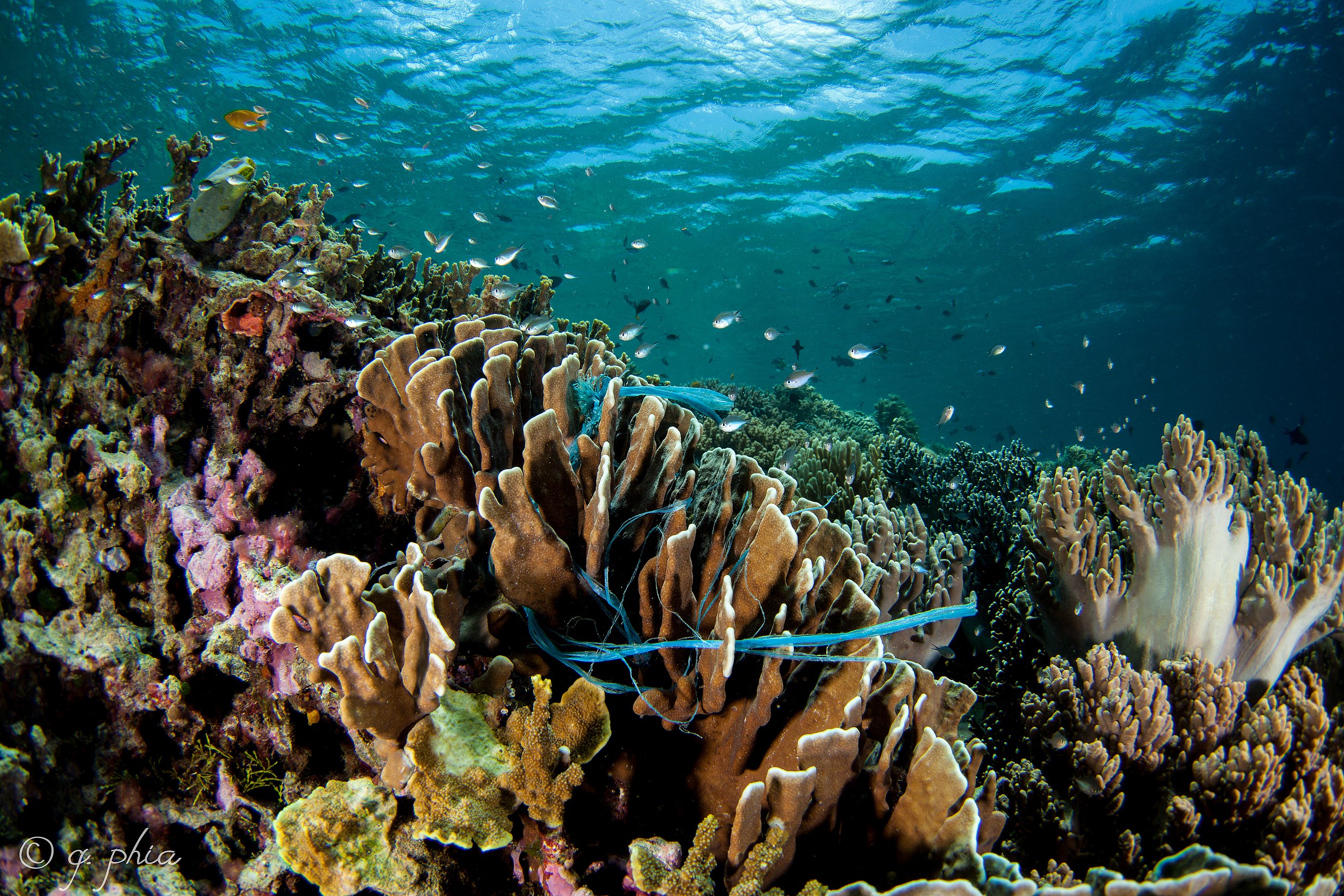
Given its immense and devastating impact, it is therefore essential that we study plastic pollution – including where it occurs, what sort of plastic is most common and how it entered the environment. The more information we have about plastic pollution, the more effective we can make our solutions to it. However, little is known about plastic pollution in some ecosystems, such as mesophotic coral reefs. Mesophotic coral reefs lie deeper in the water – at depths of between 30 and 150 metres – than the shallow reefs we tend to think of, but can be just as important ecologically. Unfortunately, since we know so little about pollution on these deeper reefs, they are often overlooked for conservation and management.
What they found was astounding – and horrifying. They identified 258 pieces of man-made waste, spread across 77 of the 84 reefs surveyed. Concerningly, they even found high densities of waste on reefs more than 10 kilometres from human populations – suggesting that even the farthest reaches of our oceans are being affected by human activity. Of the waste they identified, 88% was made of plastic, with the remainder including fabric, glass and metal.
By far the most common source of plastic waste found on the reefs was fishing activity. Some 73% of the plastic waste the team identified came from fisheries, largely comprising discarded fishing nets and lines. The remainder of the plastic they encountered was composed of everyday consumer items, such as plastic bottles. On only 9 of the reefs surveyed – all located in Comoros waters – was everyday consumer plastic more common than fishing-related plastic, likely due to those reefs being close to unofficial landfill sites. The prevalence of fishing-related plastic may explain why waste was so common on largely-uninhabited reefs, since declines in fish populations have forced fishing vessels to travel further in search of their catch. Worryingly, fishing-related plastic was also found in high densities near to marine protected areas, suggesting that fishing vessels are operating on the edge of these vital conservation zones in order to take advantage of fish spilling over from inside them.
This study highlights the far-reaching nature of plastic pollution – touching even deeper-water reefs in largely uninhabited areas. It also demonstrates the importance of considering deeper, mesophotic coral reefs for conservation and management, since these vital habitats are severely affected by pollution. Furthermore, the study shows that it is essential to reduce both plastic production and consumption, whilst also working to find plastic-free alternatives to fishing gear, which the team predicted would be a significant challenge.
Story by Daniel Tucker-Bailey
Focus Paper – Pinheiro HT, MacDonald C, Santos RG, Ali R, Bobat A, Cresswell BJ, Francini-Filho R, Freitas R, Galbraith GF, Musembi P, Phelps TA, Quimbayo JP, Quiros TEAL, Shepherd B, Stefanoudis PV, Talma S, Teixeira JB, Woodall LC, Rocha LA (2023) ‘Plastic pollution on the world’s coral reefs’, Nature, 619:311-316
1 – MacLeod M, Arp HPH, Tekman MB, Jahnke A (2021) ‘The global threat from plastic pollution’, Science, 373:61-65
2 – Lamb JB, Willis BL, Fiorenza EA, Couch CS, Howard R, Rader DN, True JD, Kelly LA, Ahmad A, Jompa J, Harvell CD (2018) ‘Plastic waste associated with disease on coral reefs’, Science, 359:460-462
3 – Santos RG, Machovsky-Capuska GE, Andrades R (2021) ‘Plastic ingestion as an evolutionary trap: Toward a holistic understanding’, Science, 373:56-60
Photo (C) q phia Wikimedia Commons
Disclaimer: Another Way’s Translating Science project aims to bring accessible and inclusive environmental science to the public, highlighting underrepresented researchers and suggesting solutions as a result of the latest research. We hope to empower the public to think critically about scientific studies and findings, and use them to inform behavioural choices for our planet’s health. Our articles are written by student volunteers and while we make every effort to reflect the original scientific articles we are translating, they are not approved by the original authors. Our ‘How to find Another Way’ section at the end of every article is in the best opinion of our volunteers, and not from the original study.
